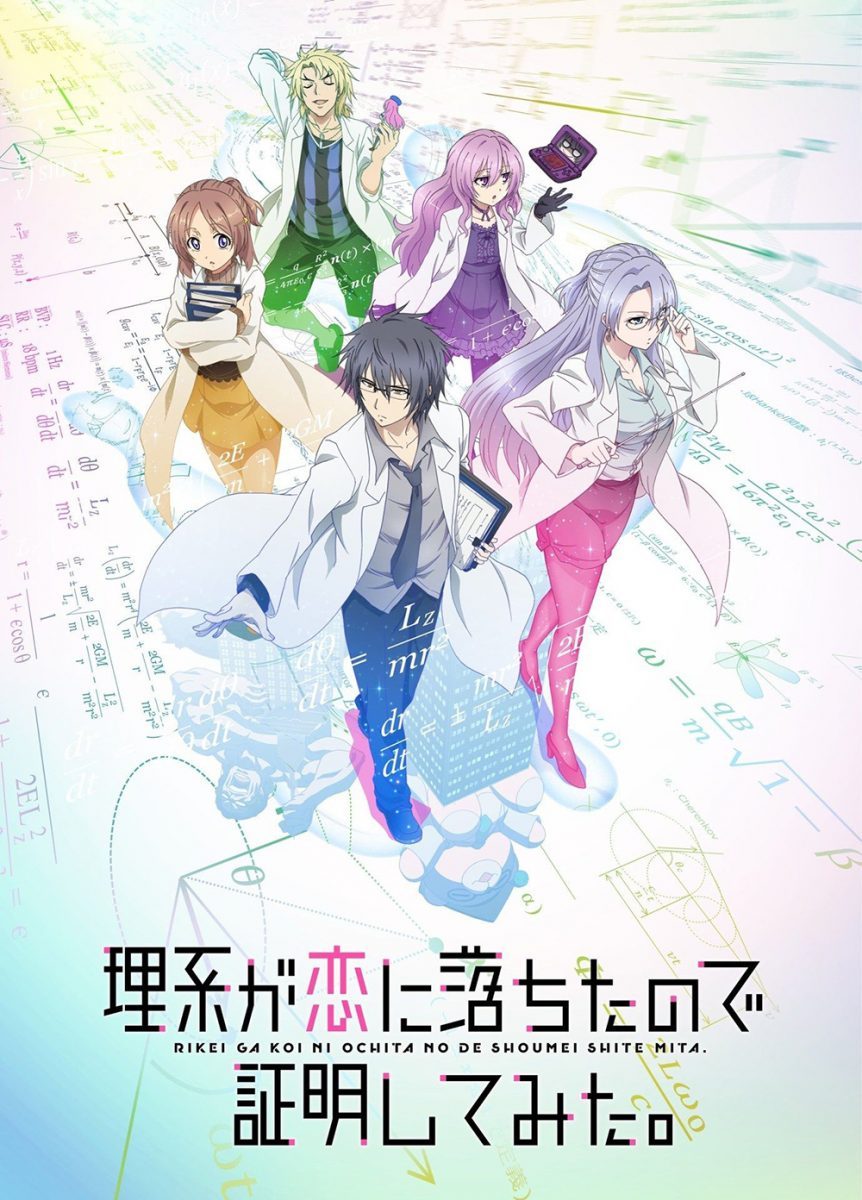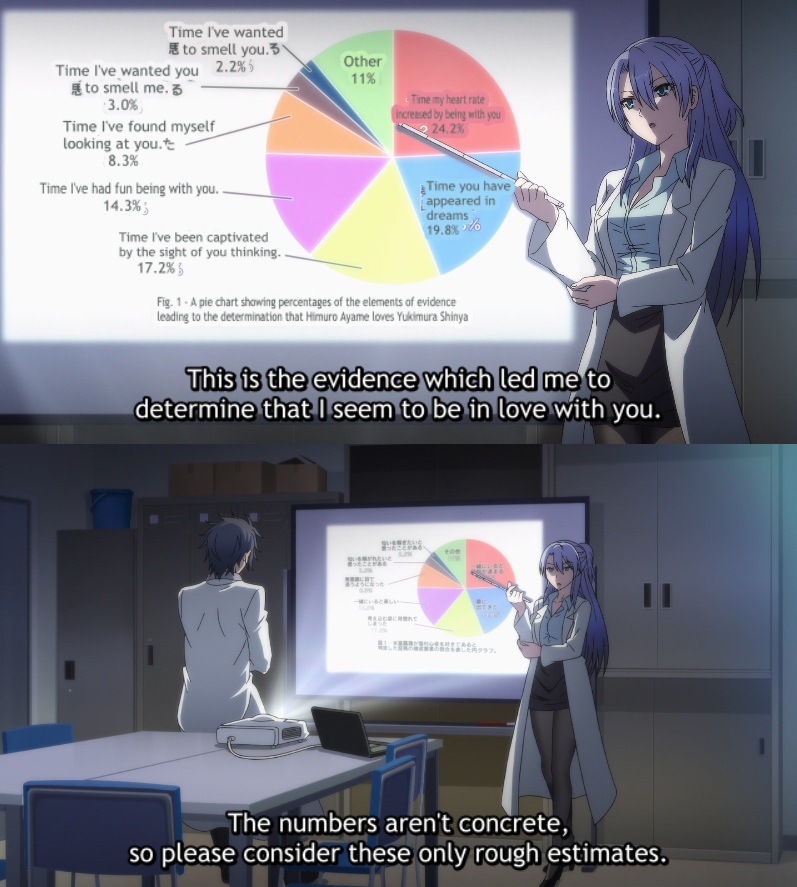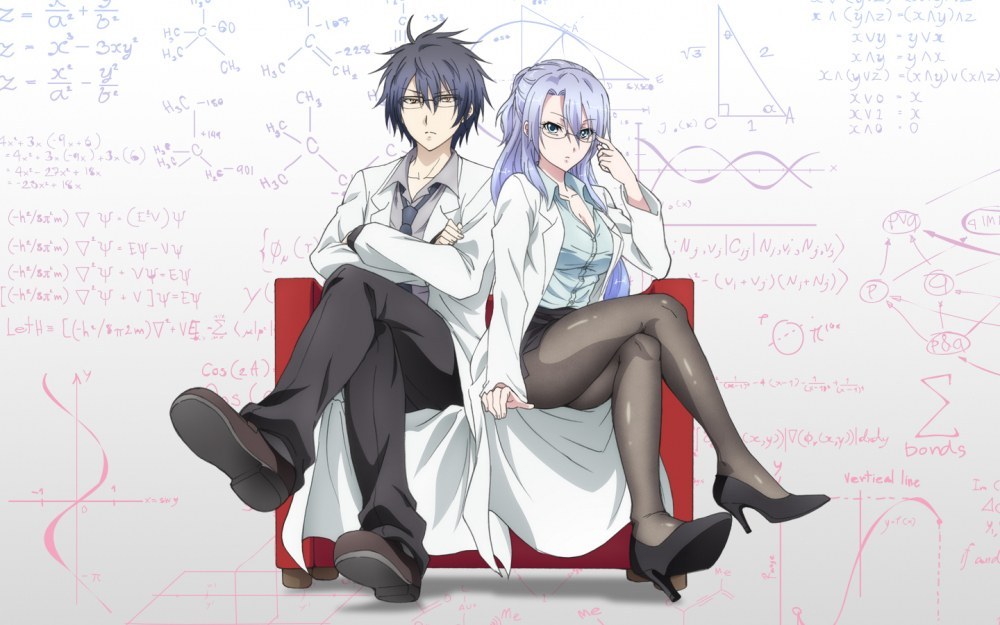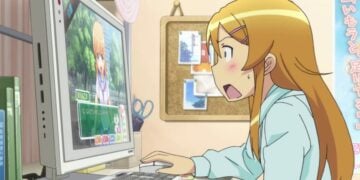
Can science and data be used to prove any fact about the universe? What about using science to quantify whether two people have fallen in love? That’s the idea behind the hilariously adorkable Rikei ga Koi ni Ochita no de Shoumei Shimashita, or Science Fell in Love, So I Tried to Prove It.
It’s the story of Ayame Himuro, a precise and nerdy rikei or science-oriented girl who works with Shinya Yukimura, an equally precise science nerd. One day she arrives at the research lab they share and announces, “Oh, by the way, Yukimura-kun. I seem to be in love with you.” Surprised at her confession of love, he asks what evidence she has for her feelings, so she shows him a chart of her own self-analysis on the subject, estimating the amount of time her heart rate has increased while around him, how many times she wanted him to smell her, and how often he appeared in her dreams.

The two begin trying to analyze love from the standpoint of science, measuring changes in heart rate after doing the famous “wall-slam,” going on a date as a scientific experiment, cooking together to see if the ingredient of “love” makes food taste better, and measuring the effects of staring at a sunset together. In order to make sure the science is correct, they take care to measure control groups, re-creating their research not just with Himuro and Yukimura, but also with the other members of the research lab, which leads to some of the most hilarious moments in the show.
There are the usual side characters to add interesting story elements to the plot. A perverted male member named Kosuke who boasts about his girlfriend, but she turns out to be a 2D character from a dating-sim game. A lazy advisor named Ibarada who just wants to play video games all day. But the best side character is Kotonoha, the only “normal” person in the show, who’s exasperated that Himuro and Yukimura can’t just put science aside and try acting like a normal couple.

If the idea behind Science Fell in Love, So I Tried to Prove It sounds similar to Kagura-sama: Love is War, it’s because it’s got a similar premise. A man and a woman who want to be together, but are kept apart this time not by their pride, but by their desire to understand love in a scientific way, as well as their shared social ineptitude.
The show is similar to another anime, Cells at Work!, in that it takes its science very seriously, providing hilarious entertainment for anyone with science or math training, in the way that anime was especially enjoyable by anyone with a medical background.
Will you be watching Science Fell in Love, So I Tried to Prove It? Tell us on Twitter!

One of the most popular yuri stories around is the Flowers series by Japanese publisher Innocent Grey, and we’re happy to announce that the third game is coming! Flowers -Le volume sur automne- is nearing release and will be out soon. As in the previous games, there’ll be a limited release of just 500 physical packages, which come with kawaii acrylic figures of the characters from the game along with background postcards to build dioramas with. Preorder Flowers Autumn now and save 10%!














